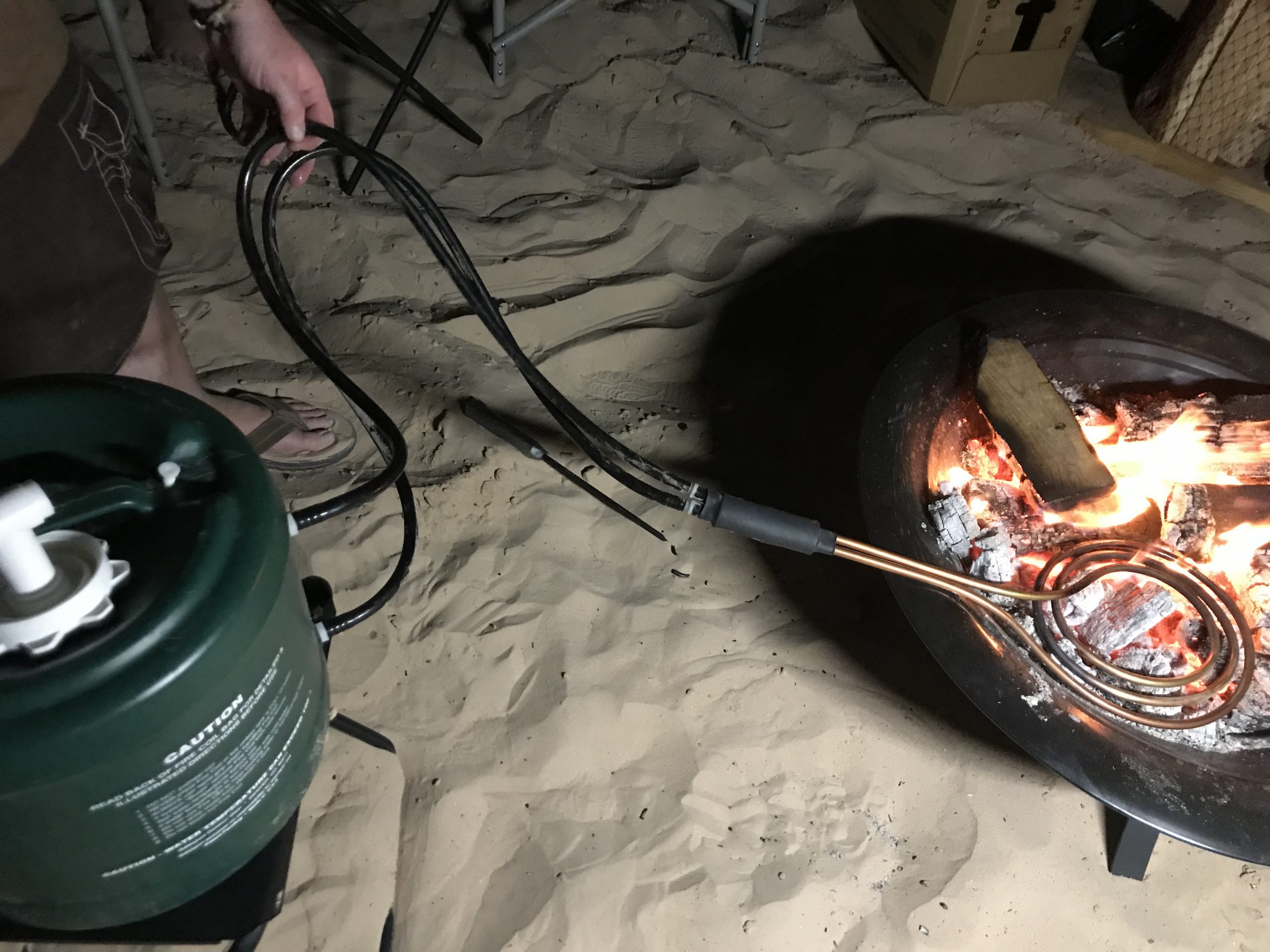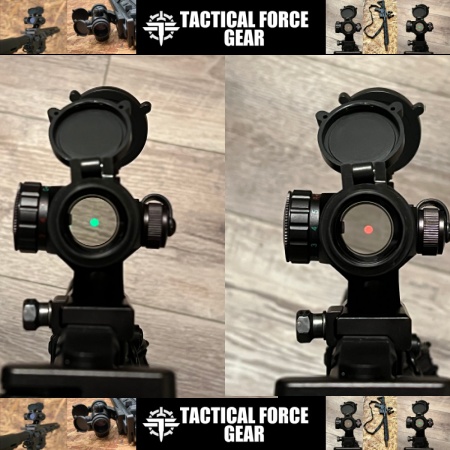If you take away the hot water in a country like Brazil, much of the country wouldn’t miss a beat. In the neighborhood my wife’s family is from, the water goes out on a regular basis. They just keep a new plastic trashcan full of water in the shower along with a plastic cup and bathe with that. Most homes don’t even have hot running water, so it’s not that big of a deal. It’s also a lot warmer there. But now imagine taking away hot showers in the USA. I have no doubt that people would be rioting in the streets!
While we could probably get by with sponge baths, it is a comfort to keep up normal routines during emergencies, such as the ritual of making a cup of tea or coffee in war time. The sense of normalcy and civilization that they bring can help keep survivors functioning. They have a “Keep calm and carry on” effect. Such routines or rituals play a role in improving morale and survival psychology. Their importance should not be underrated. Hot showers are one such routine for most Westerners.
Comfort aside, hygiene is important for survival. In cold weather, you will be warmer if your body, hair and clothing and sleeping bags are clean. Cleanliness is vital to peak performance of insulation. Staying warm is vital to good sleep and good sleep is vital to staying sharp, alert and alive, so effective survivors maintain proper hygiene.
Most backpackers and campers don’t realize that they are as likely to get giardiasis from not washing their hands before meals as by drinking untreated drinking water. Think about that for a minute and you’ll probably either start washing your hands or stop filtering your drinking water. I do the former, but your mileage may vary.
1. Water Reservoir
The reservoir should be dark in color so it will warm the water a few degrees when set in direct sunlight. The reservoir needs nipples with caps for the two hoses from the heating coil, one near the bottom of the tank and the other nearer the top. This arrangement facilitates the cycling of the water through the heating coil via convection, eliminating the need for a pump to cycle the water through heating coil! The caps enable you to plug the nipples once the water is hot so the heating coil can be stored in a safe place.
In the photos, I used a Stansport Hotman II, but you can install nipples in dark colored 5 or 6-gallon bucket and install a black Gama Seal lid on it. You can get fancy and install nipples with on/off valves or go low tech and plug the nipples or cap them with PVC pipe caps if you remove the heating coil.
2. Copper Heating Coil with Tubing
The copper heating coil is versatile and adaptable. It can be put in a campfire, grill, stove or virtually any other heat source to heat the water. At a fixed site like a home or cabin, you can even put it in a solar oven or run the water lines to a solar water heater, which is much more effective that a solar bag shower because you can greatly increase the surface area, make use of the greenhouse effect, concentrate solar energy with mirrors, optimize the angle of the solar collector or even mount it on a solar tracker so it follows the sun and maintains optimal orientation.
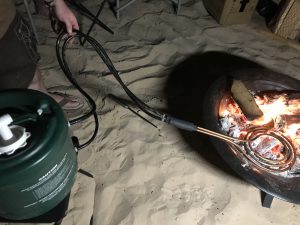
This versatility means that you can use virtually any heat or fuel source to heat the water. You can use biomatter, wood or other solid fuels, liquid fuels, gas fuels or renewable energy sources to heat the water. You can even mount the coil on your vehicle’s exhaust manifold to heat water while you drive. With a little imagination and creativity I’m sure you could come up with many ways to heat water using the copper coil.
You can buy a coil or make one to any specifications you need by bending copper tubing into the desired shape, making copper heating coils very adaptable.
Via the process of convection, water in the coil is heated and naturally rises to exit the heating coil through the uppermost tube and then rises to the top of the reservoir. Cooler water is drawn from the bottom of the reservoir into the lower side of the heating coil where it is heated, causing it expand, rise to the top, and circulate. Water is thus drawn through the coil using heat alone, eliminating the need for a pump to circulate water through the heating coil and eliminating a potential points of failure in the shower design.
Controlling the water temperature isn’t all about comfort either. In the event that your shower is used for nuclear or chemical decontamination, hot water opens pores, enabling fallout particles to become embedded in the skin. Cold water closes pores, sealing fallout particles into skin pores, therefore water used for radiological decontamination should be neither hot nor cold, but tepid. Hair conditioner should not be used either because it binds fallout particles to proteins in the hair instead of washing them out.
3. Block & Tackle
Long term, seals and motors can go out on electric pumps, wiring can corrode and care must be taken so that alkaline batteries don’t burst inside the battery holder, so I prefer to keep it simple and simply raise the water reservoir to develop water pressure. This is easily accomplished with a block and tackle.
I use an inexpensive block and tackle from Harbor Freight Tools that also comes with a folding gambrel to hoist big game for field dressing. I set the gambrel aside and use the block and tackle to lift the water reservoir high into a shelter or from the branch of a tree or the frame of a shelter to develop plenty of water pressure. Once it’s high enough to shower under comfortably, tie off the rope.
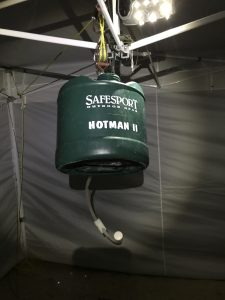
4. Shower Hose
The shower hose enables you to put water where it is needed and should feature a valve (a ratcheting pinch valve works well and can be operated with one hand) and a shower head.
5. Shower Deck
A folding wooden shower deck or mat of closed cell foam will enable you to shower without getting your feet dirty. It is not really necessary as you can shower on rocks or just shower in your flip flops instead, but it’s a nice touch for car camping and fixed sites.
6. Shower Shelter
A shower shelter isn’t strictly necessary, but it provides privacy, which some folks will insist upon. A shelter can also double as a shelter latrine, laundry, sunshade or even a tent. There are many commercial models to choose from, or you can construct your own temporary or permanent structure as you see fit.
I have been building and using camp showers since the 1980’s. I have tried many options, and I hope you can benefit from some of my failures and successes.

In the photo to the right, you can see a propane single burner propane shower that I packed into Horton Springs on a backpacking trip. It was heavy, but it was a short, easy hike and it worked great, but I had to cycle the cold water from Horton creek through the single burner twice to get it as hot as I wanted it, but a nice hot shower in the forest felt amazing after a day on the trail.
The main downside to this solution was that propane cylinders and D-cell batteries are heavy and more suited to home use or car use backpacking or long-term survival.
There are many shower designs, some better than others. Here are a few points to consider when building an off-grid shower:
- A solar bag shower is simply a black bag with a hose, valve and shower head attached. You fill it with water, set in the sun until it heats up, and then hold it up above your head (if it is a small model) or hang it up to develop water pressure.
- Solar showers only get warm if they are in direct sunlight, so you have to plan ahead. You’ll be showering about 3-4p.m. in the afternoon if you want a warm shower from a solar bag shower.
- Manage your expectations of simple solar design features such as using a dark reservoir and placing it in the sun. It probably won’t bring water to the temperature you desire, but if it raises the temperature by ten degrees, that’s a win. Take it, but don’t stop there. That’s less firewood to chop or less propane you have to buy. Think in terms of small gains by steps and manage your expectations of renewable energy systems. They may require some minor lifestyle adjustments but that’s the price of self-reliant off grid living and true freedom.
- If you use a small reservoir, you’d better know how to shower with a 1-3 quarts or liters of water. Learning to shower with a small amount of water involves a learning curve. It’s best to learn how before you find yourself in a situation where you must ration water.
- The same goes for water storage. The average American uses 90-some gallons of per day. Getting down to one or two is harder than most people think so it’s a mistake to store a gallon per person per a day and plan on your family figuring it out on the fly.
- If you use a big reservoir and have no way to get it up high to develop water pressure, you’d better have world-class limbo skills or some way to develop pressure.
- Commercial showers often use compressed air or pumps to develop water pressure, which sounds great, but if it’s going to sit in storage for 20 years before it gets used, there are simply too many potential points of failure. A gasket, seal, motor or battery will fail, and your shower won’t work. Keep your survival gear simple and it will be less likely to let you down.
- The more water a solar shower holds, the greater the thermal mass you have to heat up.
- If you can help it, don’t fill your shower directly from a surface water source with fine sand or other particles suspended in it or the hose and shower head will clog after a couple of uses. Pre-filter the water, settle it and decant clear water off the top or use coagulants (potassium alum, potassium aluminum sulfate, ferric sulfate) or flocculants (natural flocculants include starch, chitosan and alginate and synthetic flocculants are petroleum-based polymers such as polyacrylamides, polyamines and polyethylene oxide) to keep it from clogging.
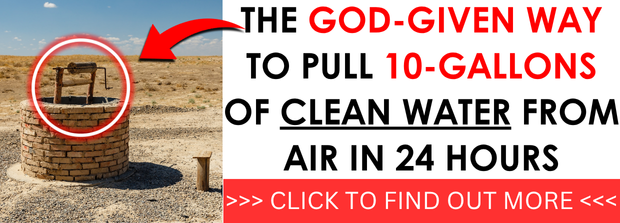
Knowing how to construct a simple off-grid shower is something you must know to become self-reliant. Constructing a simple off-grid shower is a simple project that can be completed in an afternoon, if you do it now, while it is a simple matter to find the requisite materials. If you wait until you are in the middle of a disaster, you may not build a shower at all because you may have bigger problems to tackle. In this regard, building an off-grid shower is an example of how even small problems often snowball in disasters due to lack of preparation.






Read the full article here

